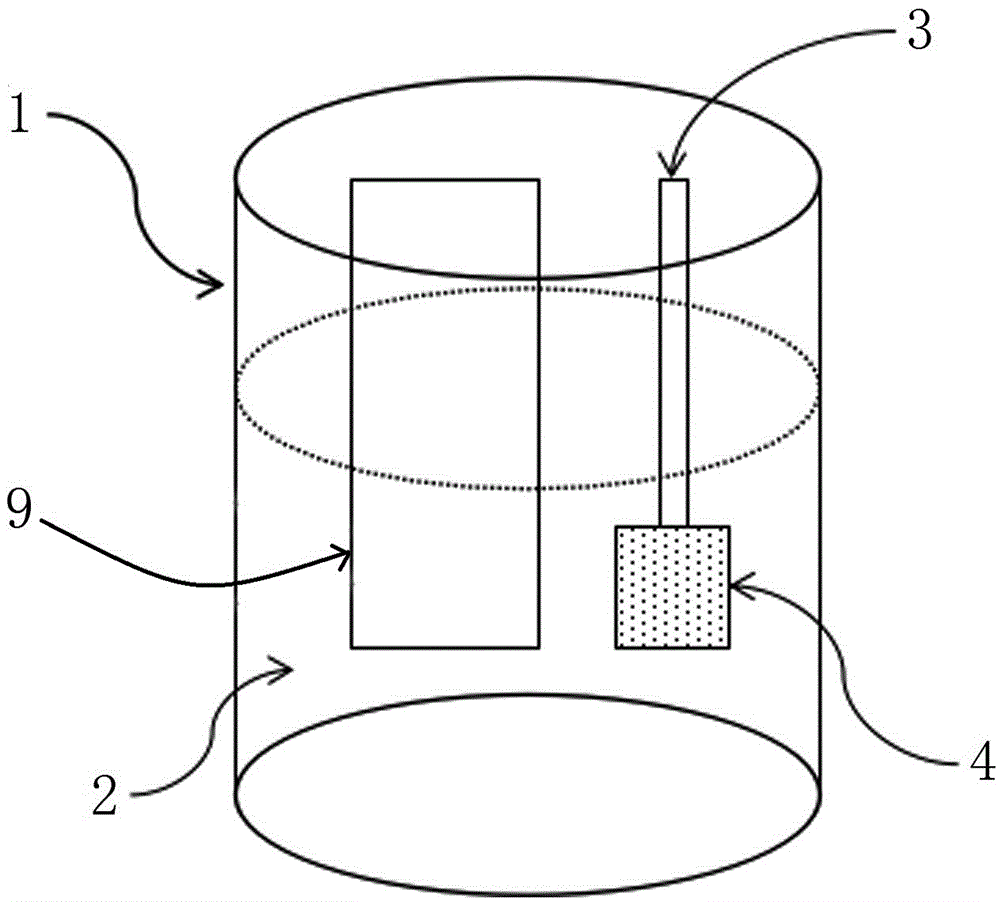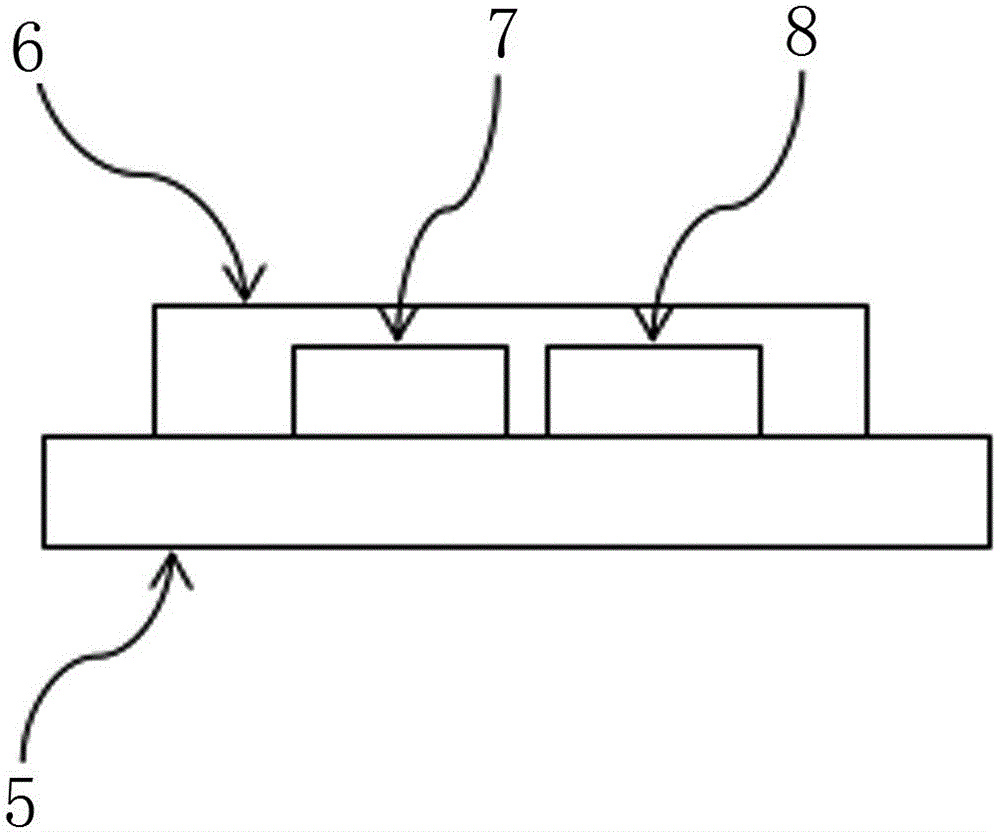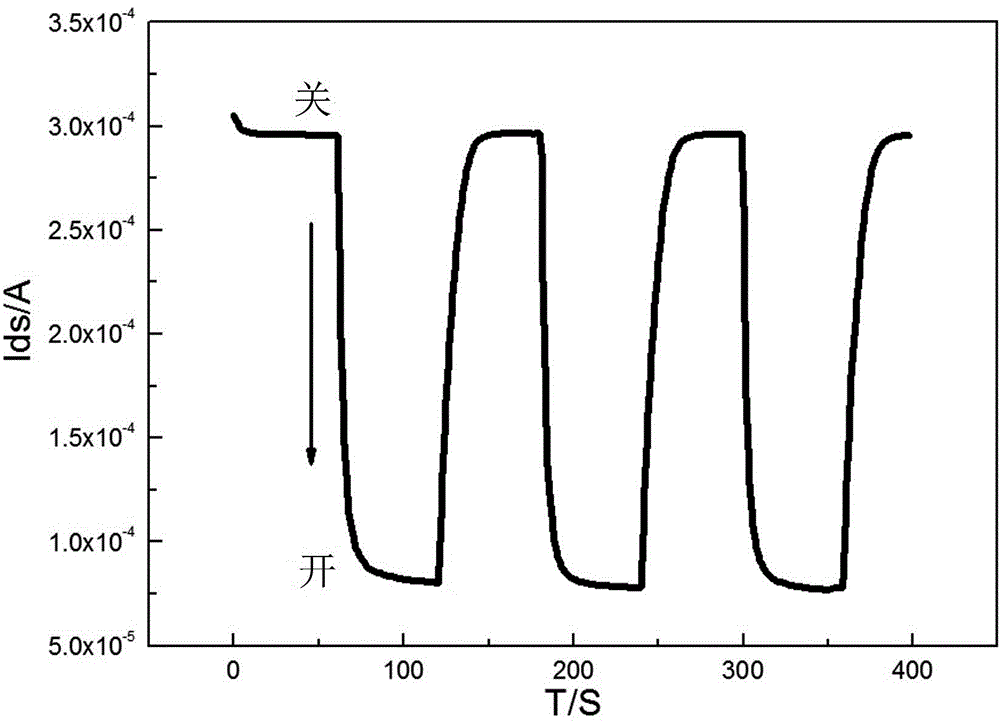Photoelectrochemical biosensor and preparation method thereof
A biosensor and photoelectrochemical technology, applied in the field of biosensing, can solve the problems of difficult miniaturization of photoelectrochemical biosensors, and achieve the effects of simple structure, small device size and high sensitivity
- Summary
- Abstract
- Description
- Claims
- Application Information
AI Technical Summary
Problems solved by technology
Method used
Image
Examples
Embodiment 1
[0047] Example 1 Photoelectrochemical DNA sensor based on organic electrochemical transistor
[0048] Principle: The gate electrode is an ITO electrode assembled with cadmium sulfide quantum dots (CdS QDs). Under light conditions, when the energy of the light is greater than the energy required for the electron transition in CdS, the electrons in the valence band in CdS will transition to the conduction band. , forming electron-hole pairs. When the electrons in the conduction band are injected into the electrode, the electron donor in the solution provides electrons to the holes in the valence band, which will form a photocurrent. The generation of this current will reduce the potential of the electrolyte / gate electrode interface, thereby increasing the applied on the OECT device. effective gate voltage. The channel current of OECT is given by the following equation:
[0049]
[0050] where q stands for electron charge, µ stands for hole mobility, represents the initial...
Embodiment 2
[0062] Example 2 Photoelectrochemical immunosensor based on organic electrochemical transistor
PUM
| Property | Measurement | Unit |
|---|---|---|
| Thickness | aaaaa | aaaaa |
| Thickness | aaaaa | aaaaa |
Abstract
Description
Claims
Application Information
 Login to View More
Login to View More - R&D Engineer
- R&D Manager
- IP Professional
- Industry Leading Data Capabilities
- Powerful AI technology
- Patent DNA Extraction
Browse by: Latest US Patents, China's latest patents, Technical Efficacy Thesaurus, Application Domain, Technology Topic, Popular Technical Reports.
© 2024 PatSnap. All rights reserved.Legal|Privacy policy|Modern Slavery Act Transparency Statement|Sitemap|About US| Contact US: help@patsnap.com










